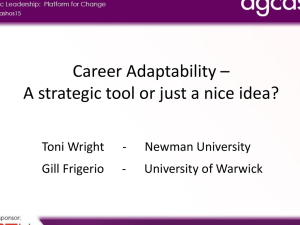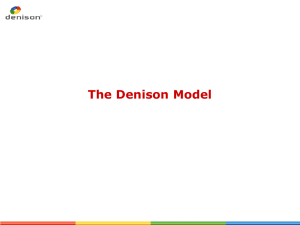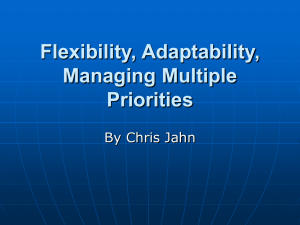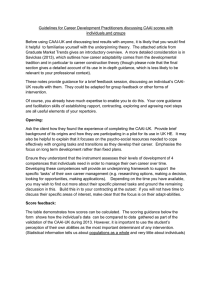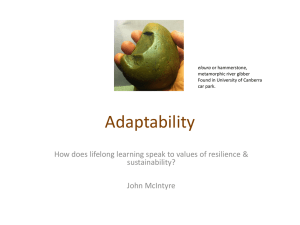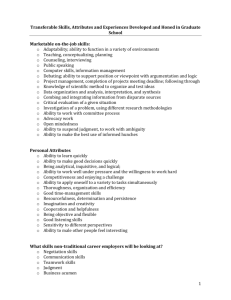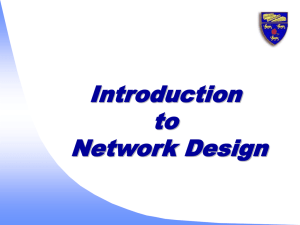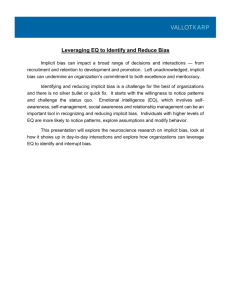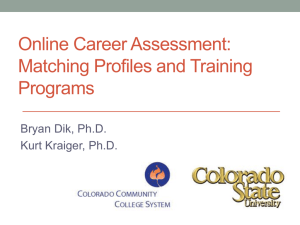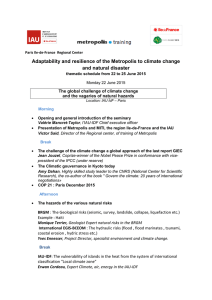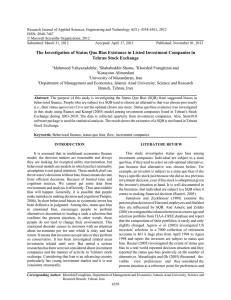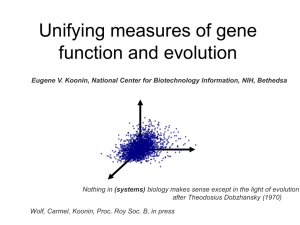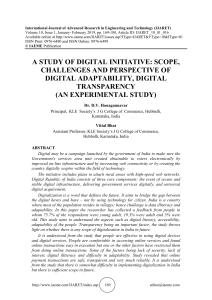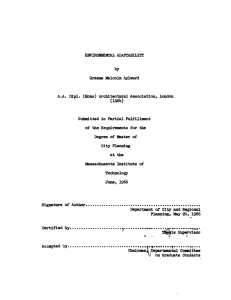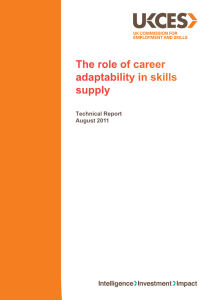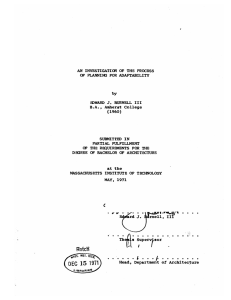The Enemies of Adaptability
advertisement
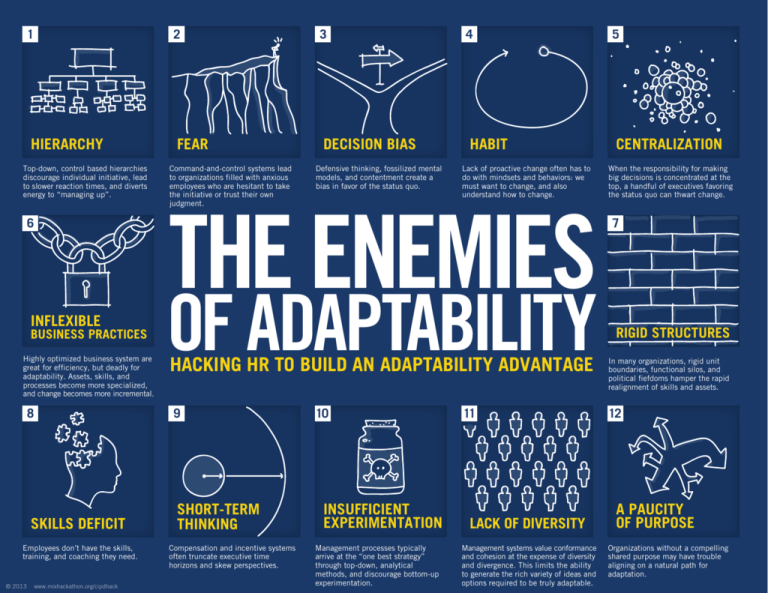
1 HIERARCHY Top-down, control based hierarchies discourage individual initiative, lead to slower reaction times, and diverts energy to “managing up”. 6 INFLEXIBLE BUSINESS PRACTICES Highly optimized business system are great for efficiency, but deadly for adaptability. Assets, skills, and processes become more specialized, and change becomes more incremental. 8 SKILLS DEFICIT Employees don’t have the skills, training, and coaching they need. © 2013 www.mixhackathon.org/cipdhack 2 FEAR Command-and-control systems lead to organizations filled with anxious employees who are hesitant to take the initiative or trust their own judgment. 3 DECISION BIAS Defensive thinking, fossilized mental models, and contentment create a bias in favor of the status quo. 4 HABIT Lack of proactive change often has to do with mindsets and behaviors: we must want to change, and also understand how to change. THE ENEMIES OF ADAPTABILITY HACKING HR TO BUILD AN ADAPTABILITY ADVANTAGE 9 SHORT-TERM THINKING Compensation and incentive systems often truncate executive time horizons and skew perspectives. 10 INSUFFICIENT EXPERIMENTATION Management processes typically arrive at the “one best strategy” through top-down, analytical methods, and discourage bottom-up experimentation. 11 LACK OF DIVERSITY Management systems value conformance and cohesion at the expense of diversity and divergence. This limits the ability to generate the rich variety of ideas and options required to be truly adaptable. 5 CENTRALIZATION When the responsibility for making big decisions is concentrated at the top, a handful of executives favoring the status quo can thwart change. 7 RIGID STRUCTURES In many organizations, rigid unit boundaries, functional silos, and political fiefdoms hamper the rapid realignment of skills and assets. 12 A PAUCITY OF PURPOSE Organizations without a compelling shared purpose may have trouble aligning on a natural path for adaptation.
